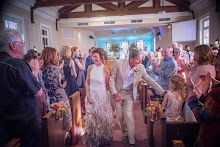Start your New Year right! : All about habits
START YOUR NEW YEAR RIGHT
Oh, wait: is it true that there is a right way to start a New Year? Can you absolutely know as true that there is a right way to start a New Year? How do you feel when you adopt the attitude that there is a right way to start a new year and that you must find and apply it? Who would you be without that belief?
One way to start any year, month or day is to begin examining assumptions. One of the most amazing of human abilities is our ability to use words, and this ability can often be mistaken for thinking. Words do not equal truth, even if spoken/written by Important People/Experts/Parents/Teachers. Maybe especially not if spoken/written by I.P./E./P./T..
Of late several phrases have become hidey holes for not thinking. “24/7” and “no brainer” strike me this way. “Thinking out of the box” is drifting perilously close to becoming another cliché far easier to say, than to say with any real meaning. What exactly is this “box” outside of which people are supposed to “think?” One way to approach this is by examining habits of physical, emotional and mental varieities. This is not to imply habits are “wrong,” but t begin to peek into one of the most striking of human characteristics: the tendency to do, think and feel the same thing over and over and over again.
Physical habits are the easiest to observe without getting into internal warfare. Which shoe do you put on first? Which leg comes out of pants first? Which foot moves forward first in walking? When faced with a new or complicated task, what happens to the breathing? Which sit bone do you favor? Which foot is steadiest for one-legged standing? Try writing or printing upside down. This gets interesting.
There are feelings that are such deep habits, we assume them as if ordained. What if someone is rude to us? Is our habitual response anger, shame, wish to disappear, amusement, curiosity, or delight? What if someone rejects us (divorce, leaves us, fires us). Is our response anger, sadness, guilt, fear, shame, resentment, clinging, worry, wish for revenge, amusement, curiosity, delight, or love? These lists of possible reactions, and our general incredulity at the possibility of responding with amusement, curiosity and delight to something “bad,” is an indication of how wired in our emotional habits happen to be.
Patterns of behavior are so deep in our lives as to be almost unseen, especially in our addiction to being in four kinds of boxes. The four walled, six-sided box of indoor life in home or office has become our substitute for a vast and beautiful world. The metal and plastic box of our cars is the major factor in our moving from one place (box) to another, and in how most of so-called civilization is ordered. From outer space it could look as if humans exist merely to feed, house, exercise and maintain these car boxes. And to top it all off we glue our attention for how many hours a day to the computer box and the television box?
These habits of placing our minds and bodies in these four boxes don’t need to be unseen. Can we be aware of that as it’s happening? Is that really where we want to be, or are we just there because that is the pattern we have molded ourselves into? If we put our minds and bodies somewhere else where would that be? Just to begin to think of the alternatives might begin to give literal meaning to the almost cliché of “thinking outside of the box.”








